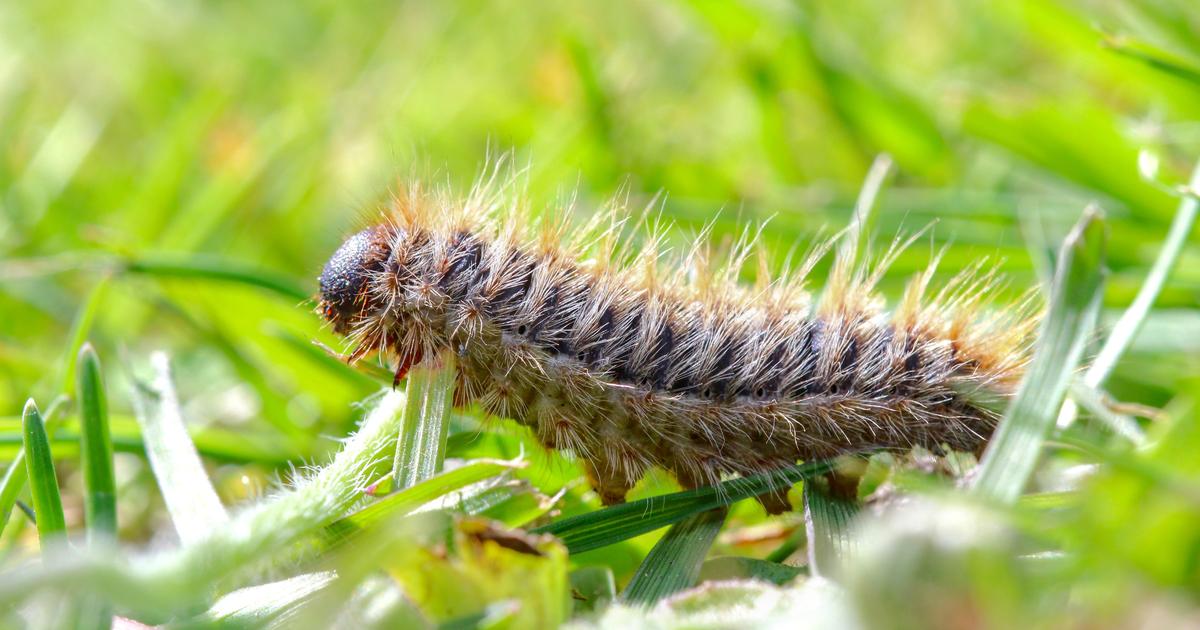Armed with a cutter, Daniel Vaugelade splits the nest that he has just torn from a pine tree.
Dozens of black and brown processionary caterpillars wriggle in the thick cocoon of whitish silk.
This stinging insect, harmful to the health of both humans and animals in whom it causes severe irritation, now infests almost all of mainland France, favored according to the authorities by global warming.
“In a nest like this, there can be 250,”
this resident of Freneuse, a town in Yvelines in the west of the Paris region, explains to AFP.
In the small town on the banks of the Seine, 70 km from Paris, processionary caterpillars appeared three years ago.
“At first, we only talked about a few nests. It was a bit anecdotal and people were intrigued
,” recalls Daniel Vaugelade.
“It was when I saw what was inside that I started to worry
,” confides this president of a local association for the protection of biodiversity.
Since then, the insect has colonized a multitude of nearby trees - little by little it devours all the needles.
“Before it was confined to slightly remote areas, now we have it in all the pine trees in the city center
,” explains Jean-Marc Pommier, the mayor of the neighboring town of Bonnières-sur-Seine.
Trees felled, destruction of nests, installation of traps around trunks, cancellation of school trips in the affected areas: the councilor applied all the instructions of the national health security agency (Anses).
Highly stinging hairs
But here as elsewhere the fight seems lost in advance.
The only authorized insecticide, BTK, requires closing the site to the public for one or even several days, and is also very controlled because it is harmful to other species.
The processionary caterpillar - due to the processions they form when they move in single file - is not an invasive species: it is native to the coniferous forests of south-eastern France.
Thanks to a milder climate, it gradually spread inexorably towards the north, due to a lack of winters cold enough to neutralize the nests, as in the past.
“To feed, the caterpillar needs a temperature that is relatively mild
,” with a minimum of
“around 9°C inside the nest during the day and zero at night
,” explains Alice Samama, from the Observatory of species of concern for human health, set up in 2021 under the aegis of several ministries.
The phenomenon, which began in the 1970s, is growing sharply.
“We can legitimately think that climate change has an impact on the evolution of areas occupied by caterpillars
,” underlines Emmanuel Gachet, head of the expertise unit on biological risks at Anses.
In Yvelines, 70% of the 259 municipalities are affected, and one in five at level 1, the highest, according to ANSES.
In 2022, it added the pine processionary caterpillar, as well as that of the oak, among the species whose proliferation has an impact on human health.
The cause is its extremely stinging hairs which contain a toxic protein.
“You don't have to touch the caterpillar to be affected
,” explains Alice Samama.
“If she feels in danger, she expels her hairs, which are very volatile and can be deposited anywhere, including on drying laundry
. ”
In the event of contact, symptoms may appear such as pimples, conjunctivitis or respiratory problems, most of the time mild.
Among pets, dogs tend to play with caterpillars in procession.
“This can lead to necrosis of the tongue and potentially the death of the animal
,” explains Emmanuel Gachet.
This procession period, normally at the end of winter, is the most at risk, when the caterpillars come down from the trees to transform into butterflies.
A few kilometers from Freneuse, in the Moisson nature reserve, thousands of white balls glow in the winter sun: the pines, which make up most of the local forest, are dotted with nests.
Faced with the spectacle, Daniel Vaugelade laments:
“The caterpillars will soon come down from the trees by the millions.
But nothing was done by the Île-de-France region, which threw in the towel
.

